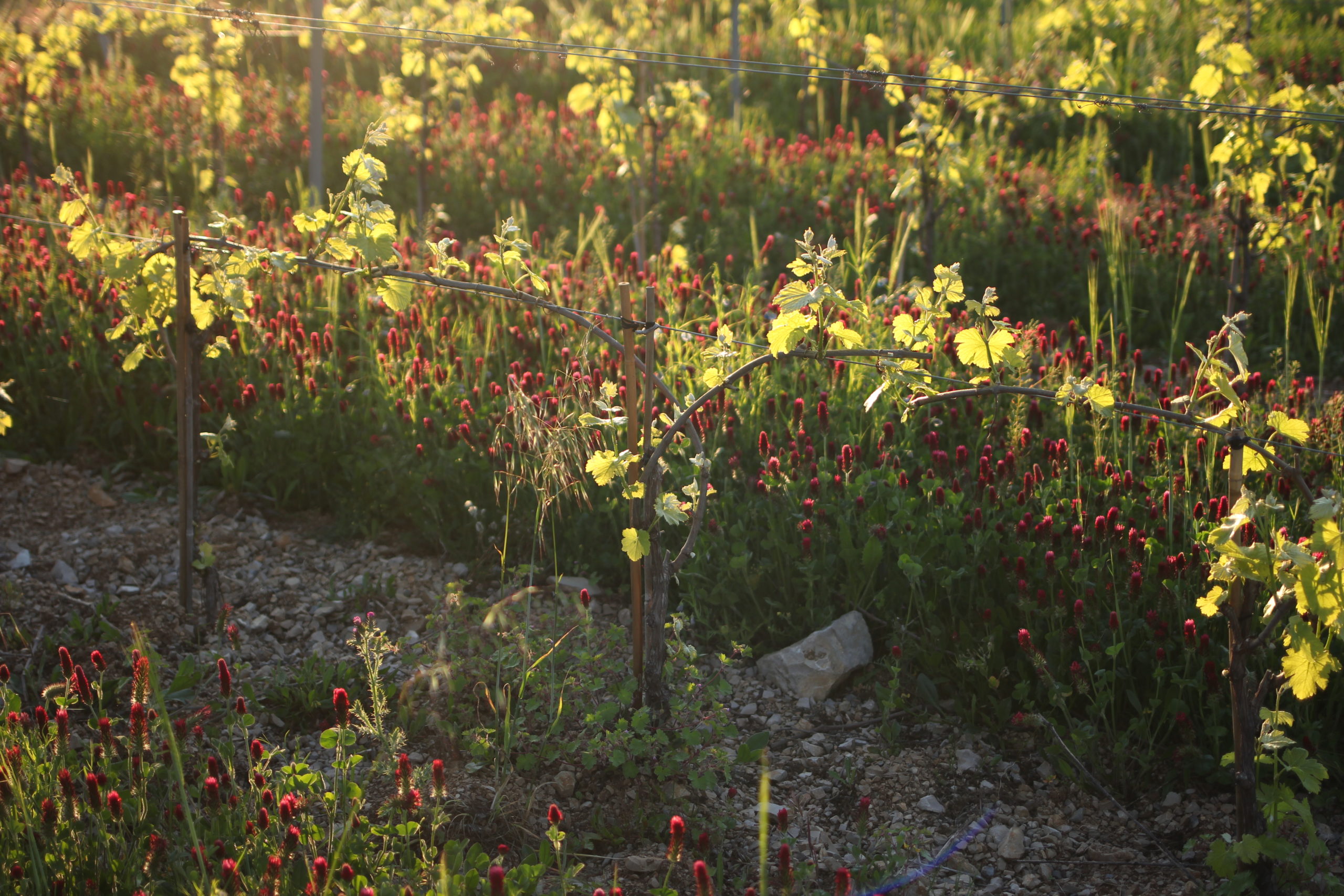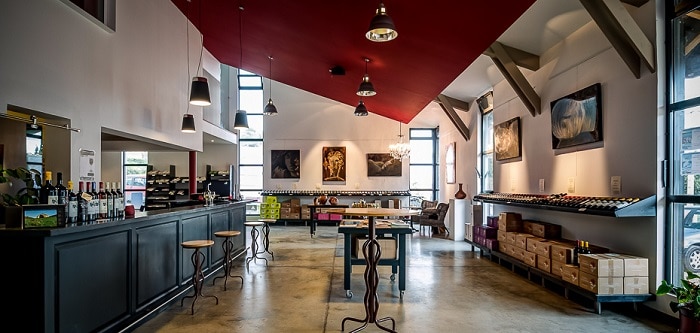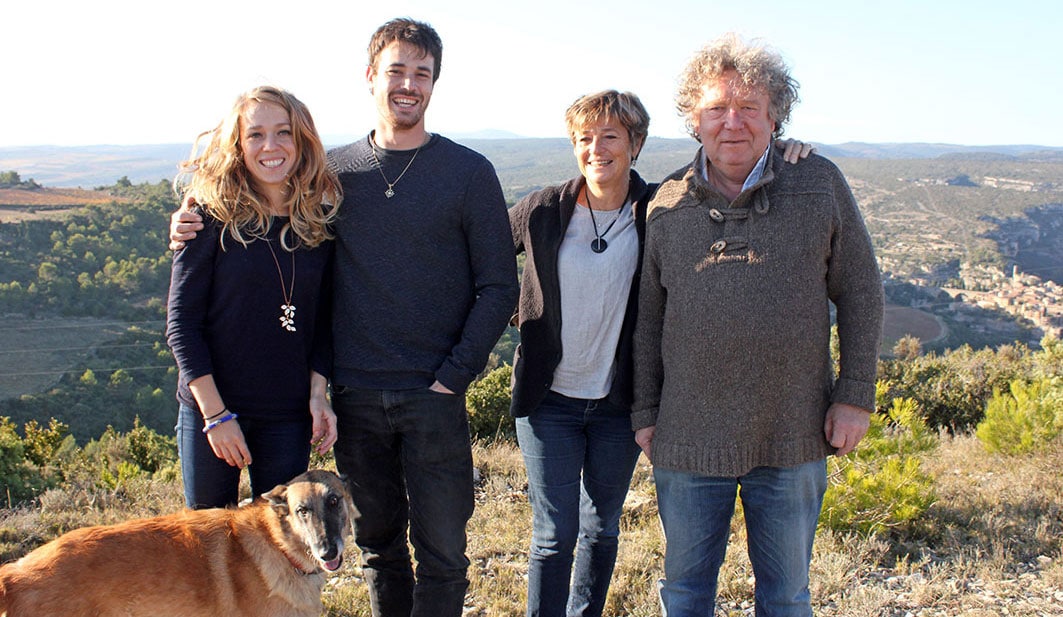TERROIRS OF CHÂTEAU COUPE-ROSES
Château Coupe-Roses is a child of the Minervois, a land located to the northeast of Carcassonne and south of the Montagne Noire, whose foothills it occupies. Its climate forms a harmonious synthesis between Mediterranean sunshine and mountain harshness.
This influence of altitude is felt even more strongly in the Causse region, where the estate is located. It consists of small plots totaling 22 hectares, spread across arid, stony hillsides between 250 and 400 meters above sea level. The relatively large temperature variations result in slow ripening and higher acidity, which intensifies the aromas.
The soils alternate between solid limestone layers, which retain heat, and deeper clay layers that serve as reserves, capturing runoff water. These layers are rich in manganese, whose coloration gives the estate its name.
These intrinsic qualities of the terroir must be brought to light through know-how rooted in respect: each plot hosts the grape variety best suited to it; amendments, treatments, and soil work are kept to a minimum, while the deep rooting of the vines — a guarantee of quality grapes — is encouraged.
Terroir is a notion that cannot be understood through space alone. Of course, geology, soil, climate, and exposure are a very important part of the concept of terroir, but just as important is the influence of time. The wine we take a full cycle to produce is, in the end, nothing more than the influence of time upon matter. Thus, a wine born from a place must also be defined by the year in which it matured, from pruning to harvest. The wine here is a condensation of space and time, captured in a bottle, meant to transmit all that it has gathered from its terroir and from the time we spent perfecting it. In this sense, it is the quintessence — the subtle born from the coarse.
Our wines are the fruit of this complex alchemy, of the ongoing dialogue between nature and the hand of man.
Stony Terroirs
(300 to 400m altitude)
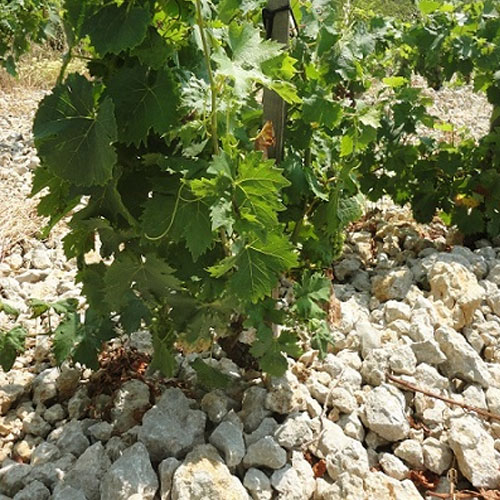
The main representative of the so-called stony terroir on our land is the Causse area. It was planted a few years ago on land once covered by garrigue, but which had previously been planted with vines, as evidenced by the shoots of Rupestris du Lot still found here and there.
Historical research has shown that these areas have not been planted with vines since the 1950s. It is not surprising that these plots were abandoned for so long, given the difficulty of working these soils for planting. Everything here is mineral. Yet beneath the thick layer of stones — which at first glance seems unfit for planting — lies a black clay rich in organic matter and with a strong earthy smell. This clay serves as a water reserve, with an organic matter content exceeding 6%. The light summer rains easily seep through the limestone fragments and saturate these clays. Their evaporation is slowed by the stony surface layer, which acts as a natural mulch. Altogether, it provides a terroir remarkably resistant to drought.
It is on this small island of vines that we chose to plant our old endemic grape varieties. Over 4.8 hectares, we have planted Ribayrenc, Aramon, Piquepoul, Cinsault, and the more southern varieties such as Grenache Noir and Gris. The whole is divided into seven plots, each interplanted with a multitude of other varieties, some of them quite rare, such as Brun Fourca, Marocain Noir, or Œillade. A single cuvée is produced, combining all the plots of this area in proportions corresponding to the surface occupied by each grape variety. Thus, while each plot is made up of a wide diversity of grapes (up to 25), the cuvée itself is composed of the diversity of plots from this site, offering through syncretism the most faithful possible representation of this terroir.
Clay-Limestone Terroirs
(300 to 400m altitude)
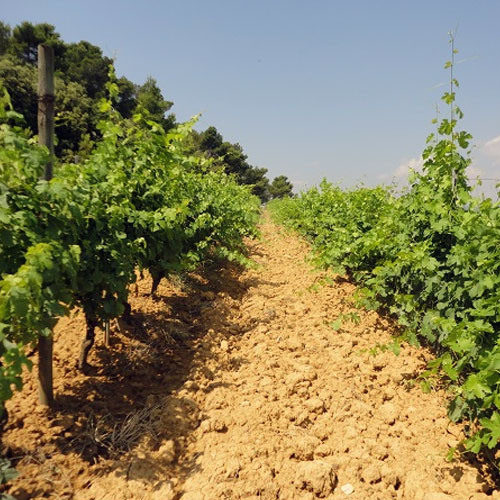
The Languedoc branch of our family were partly tile makers between the 17th and 19th centuries.
The kilns were located on the current site of the winery. Toponymy tells us that this place was called “fabrique de Coupe-Rose,” without the plural “s” at the time. The term referred to pure clay rich in manganese, which produced beautiful tiles that sold for a bit more than others — quality, already!
Thus, little by little, the Pons family was able to buy back houses, vineyards, sheepfolds, and the cellar from Baron Treilh de Pardailhan.
Château Coupe-Roses is made up of an archipelago of plots. The clays there are varied, each requiring a specific approach.
The Babio plots are the most clayey of all. The reddish-violet streaks, strongly accentuated after our rare rains, attest to the abundance of manganese ions — a hallmark of the greatest white Burgundies. The resemblance ends there!
The internal surfaces of these clays are moderately low. White wines thrive here, offering finely chiseled aromatic and structural expressions, marked by freshness and precision.
On this site, three plots are planted. Grenache Blanc is blended in the “Champ du Roy.” The Viognier yields, in very small quantities, a tiny pure-varietal cuvée — sober and delicious — sold under the “Vin de France” designation.
A third plot is planted with Roussanne and a little Marsanne. It sometimes gives us late harvests vinified as old “Rancio” wines, following our peasant tradition. But most often, we blend it with the high-altitude schist-grown Roussanne for our cuvée “Schiste.”
Other, less pure clays accumulate as colluvium behind the large stone walls, such as along the “Chemin des Crozes” (1). The red Carignans find there a pleasant balance, gaining amplitude when blended with Grenache Noir.
We also have clays that migrate with each rainfall from the abandoned slopes on the southern sides of Babio, covering large stones. On these chaotic terrains, we have planted olive trees. A bit lower down, in the bed of the Cesse River (2), the clays mix with the sands and gravels deposited by floods.
Everywhere, clay is an agronomic challenge. The revival of microbial life and the growing understanding of the virtues of specifically prepared organic matter hold the promise of new oenological achievements.
(1): A name in Occitan designating crevices in rocks and cliffs (see Crozes-Hermitage).
(2): A wide river with a Mediterranean flow regime.
Schist Terroirs
(400m altitude)
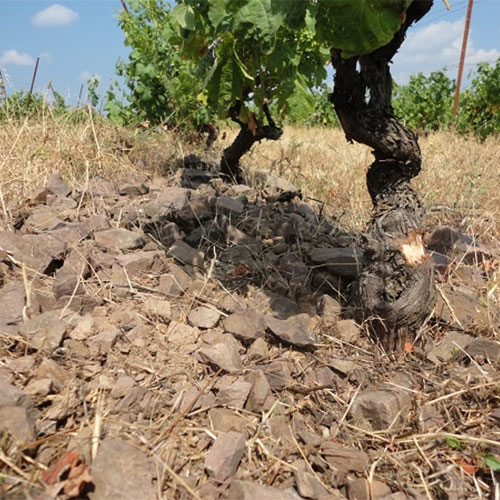
Vineyards planted on schist always produce very distinctive and remarkable wines. Some of them have long enjoyed international recognition (Collioure, Banyuls, Faugères, etc.). It is likely that great schist terroirs still lie dormant under wastelands that history has not yet given a chance to flourish.
The schists that make up our Roussanne plot are of Precambrian origin (the first and longest period on the geological time scale). The soil of this plot thus comes directly from the weathering of some of the oldest formations on Earth.
These soils are extremely poor, and the establishment of the root system is very slow due to the horizontal layering of the schist. In the photographed plot, the proportion of fine earth is very low, which prevents good water retention. The vine’s vegetative expression reflects this extreme water stress, which Roussanne does not tolerate well. Regular additions of organic matter ensure rich microbial life, fostering the very slow process of rooting. All these factors lead to very low yields (15 hL/ha) and highlight original expressions marked by vegetal notes (notably heather) and empyreumatic tones (such as rolling tobacco).
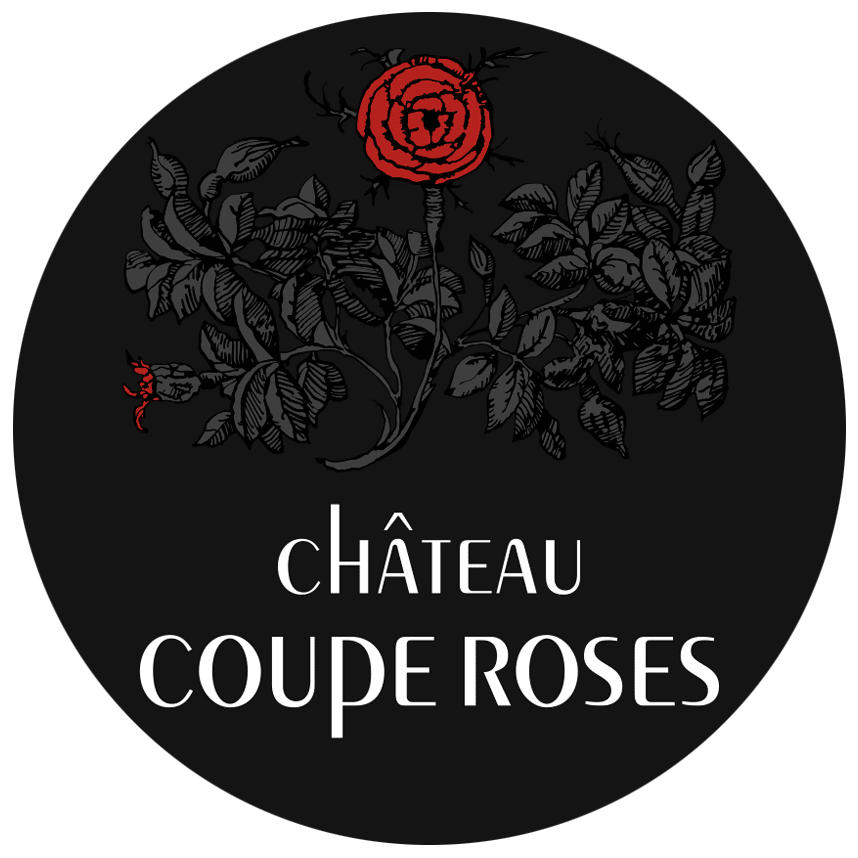
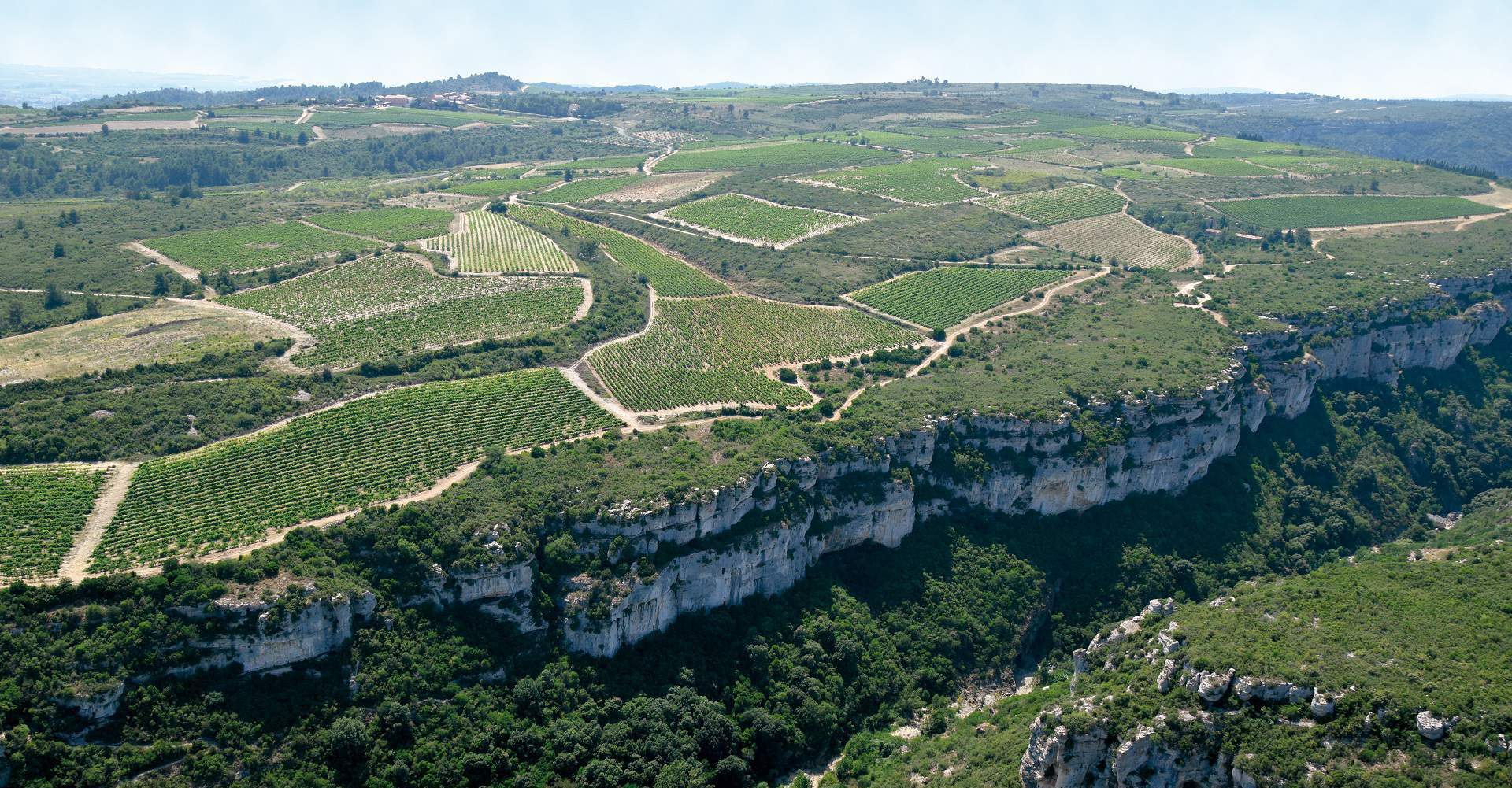

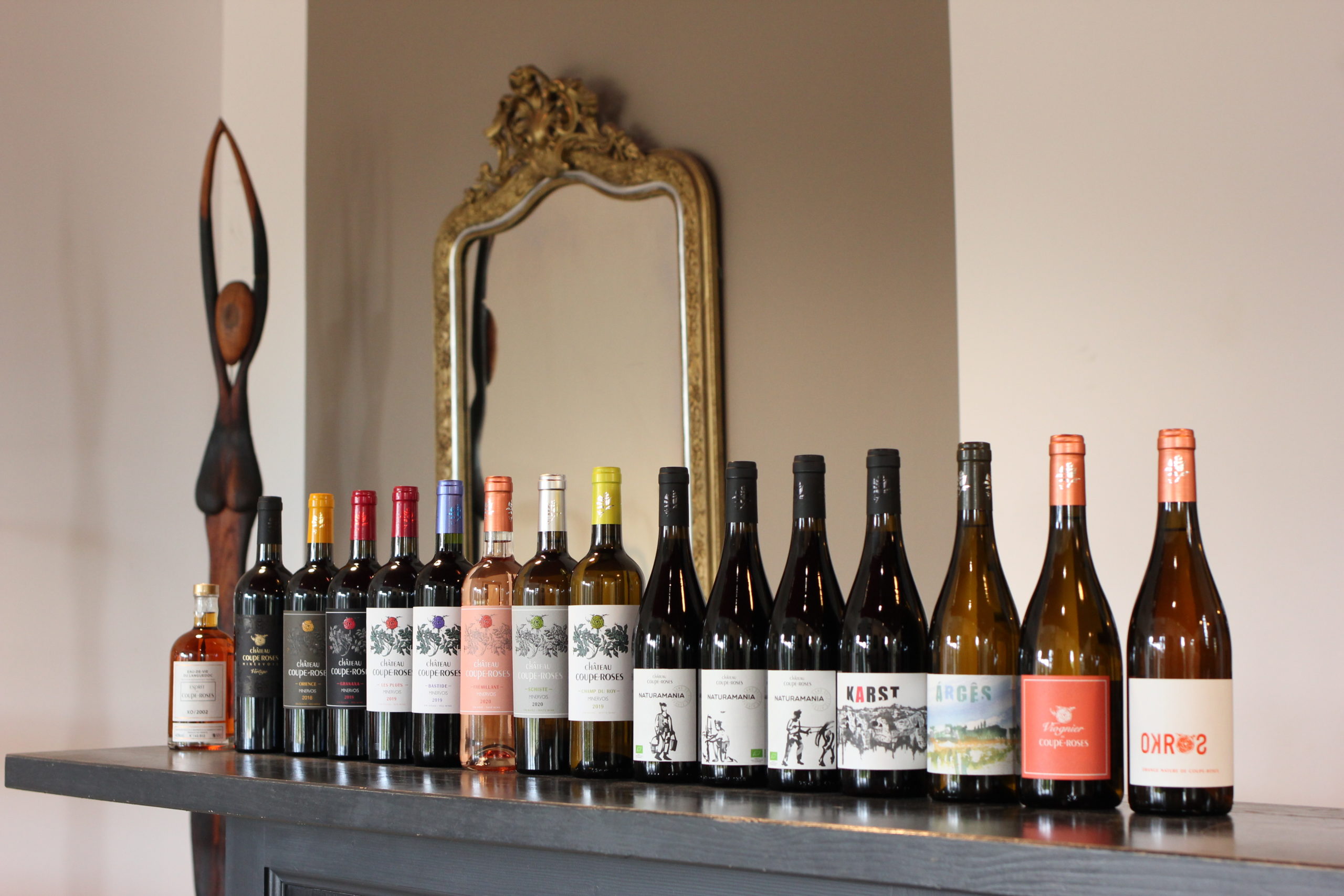
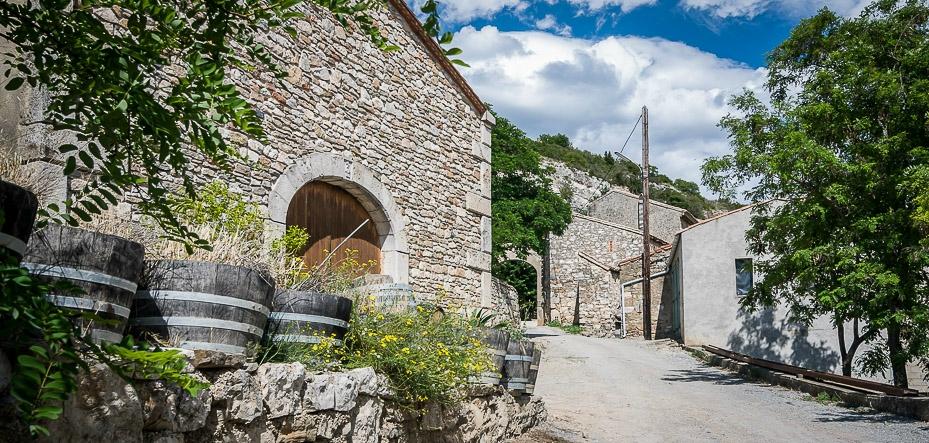
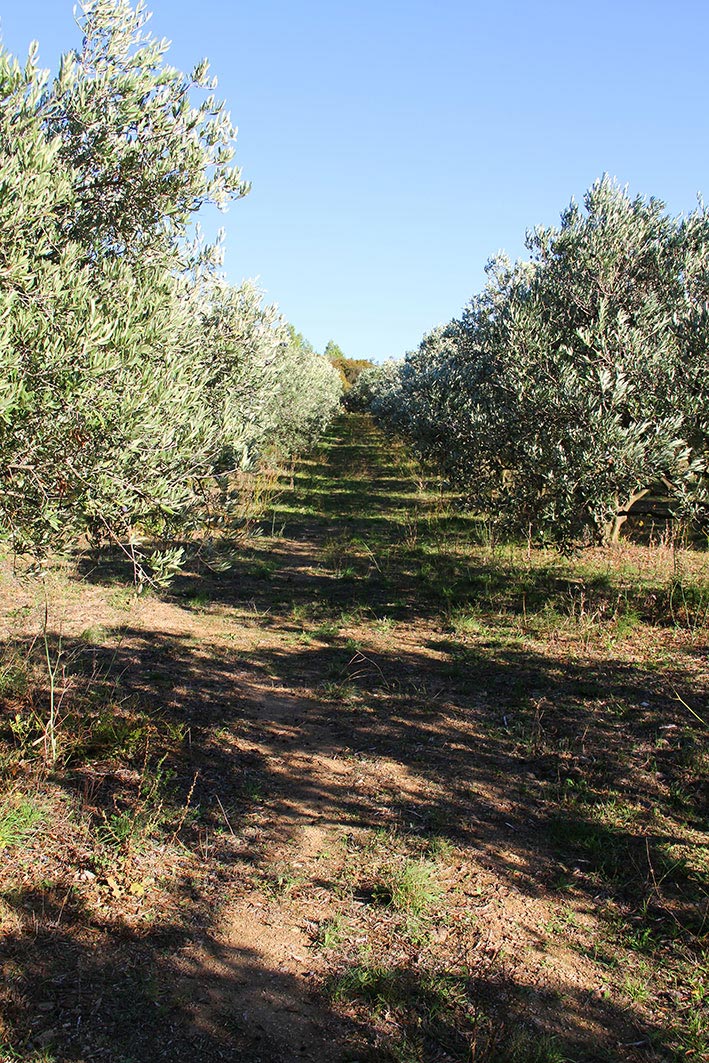
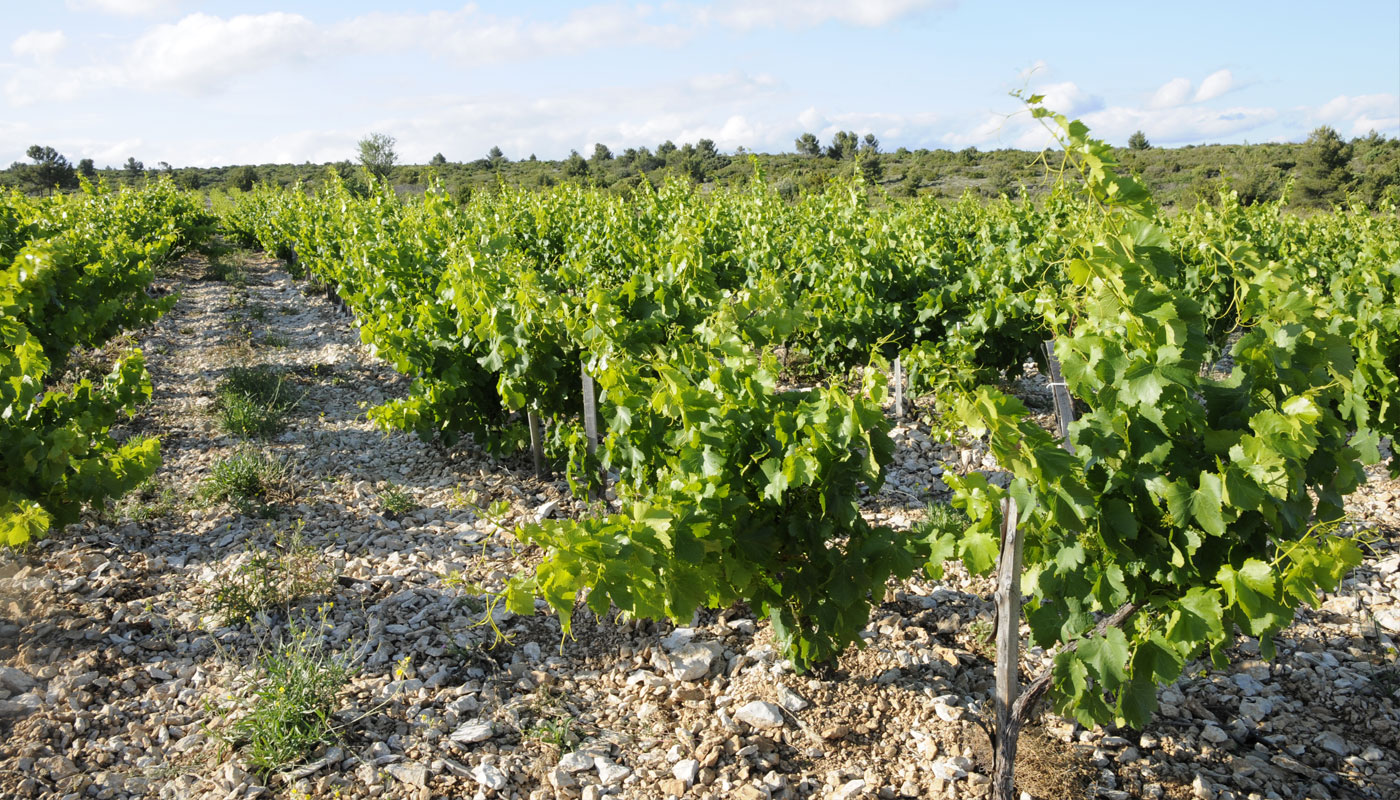
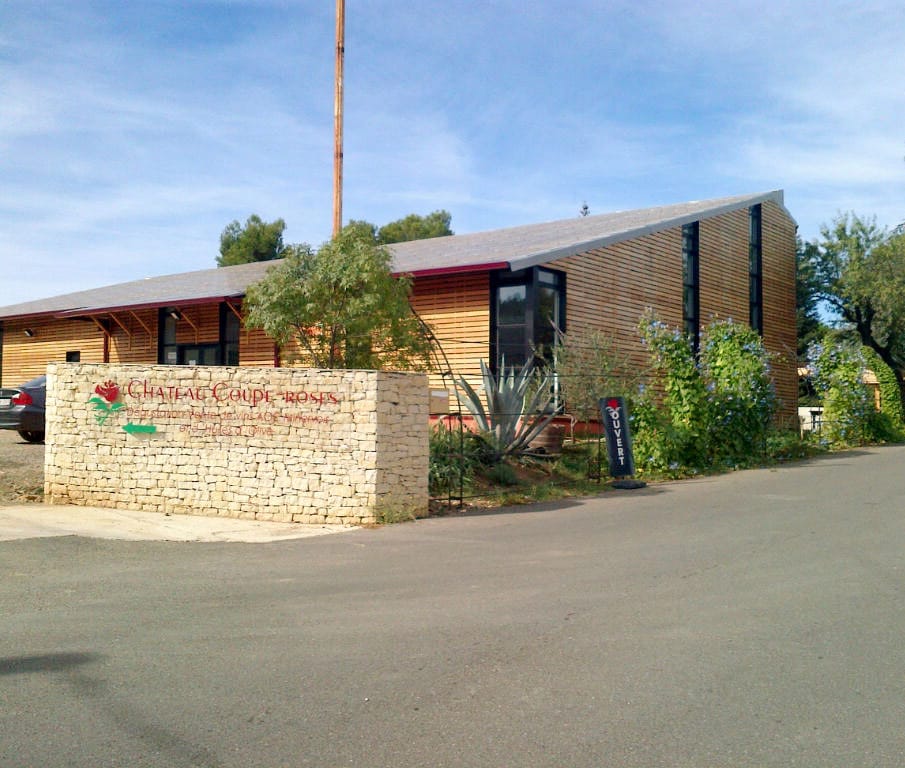
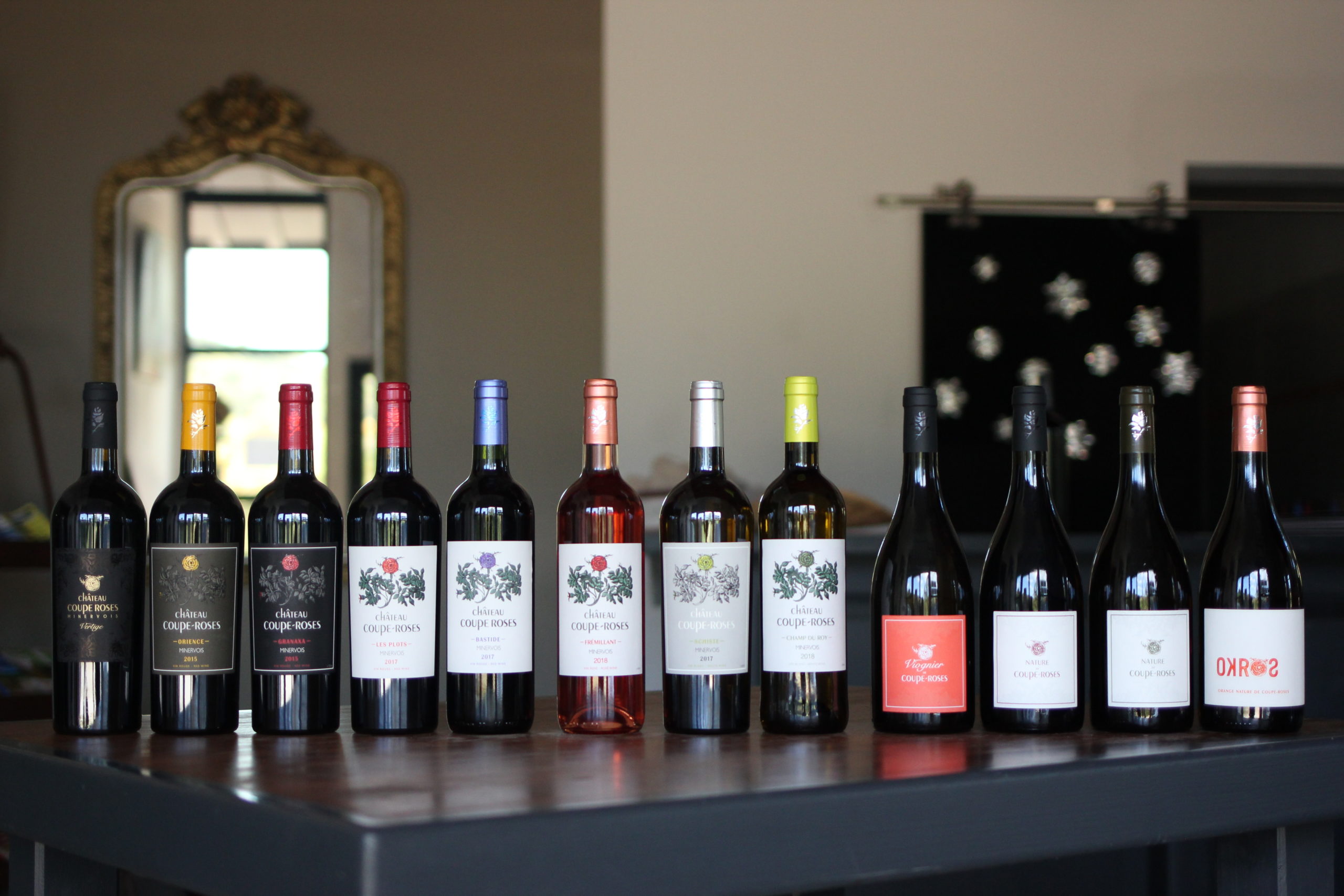
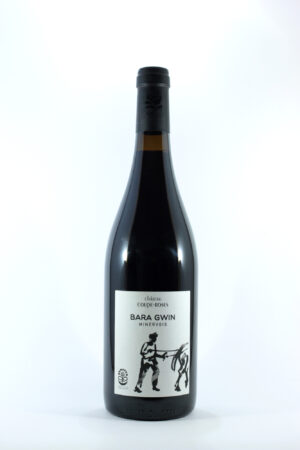
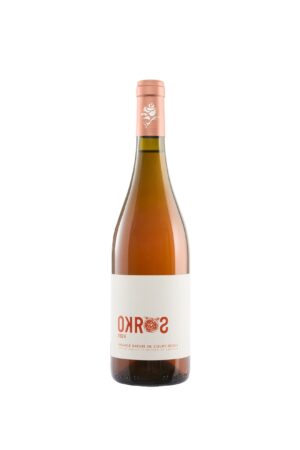
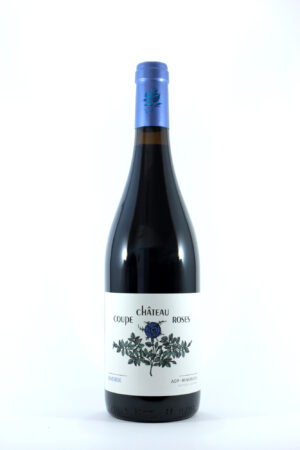
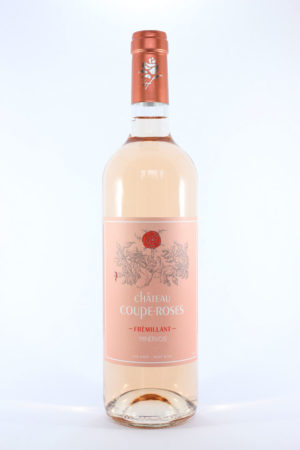
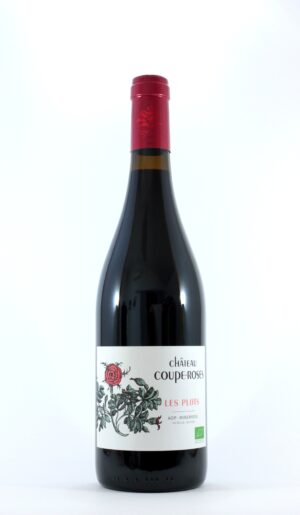
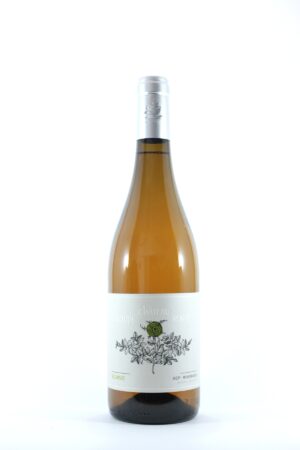
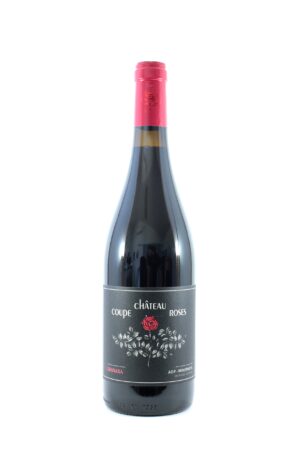
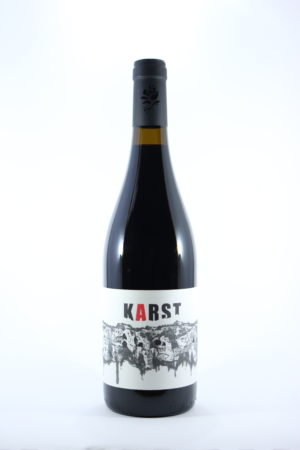
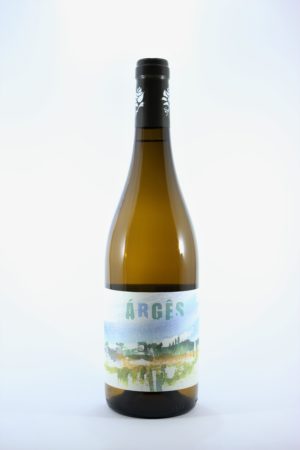
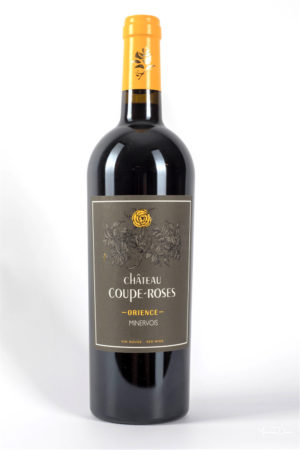
![[:fr]Magnum Les Plots 2020 Minervois[:en]Magnum Les Plots 2020 Minervois red[:]](https://chateau-coupe-roses.com/wp-content/uploads/2017/12/chateau-coupe-roses-la-caunette-vin-rouge-bio-magnum-les-plots-minervois-300x450.jpg)
![[:fr]Magnum Granaxa 2020 Minervois[:en]Magnum Granaxa 2020 Minervois red[:]](https://chateau-coupe-roses.com/wp-content/uploads/2017/12/chateau-coupe-roses-la-caunette-vin-rouge-bio-magnum-granaxa-minervois-300x450.jpg)
![[:fr]Magnum Orience 2016 Minervois[:en]Magnum Orience 2016 Minervois red[:]](https://chateau-coupe-roses.com/wp-content/uploads/2017/12/chateau-coupe-roses-la-caunette-vin-rouge-bio-magnum-orience-minervois-300x450.jpg)
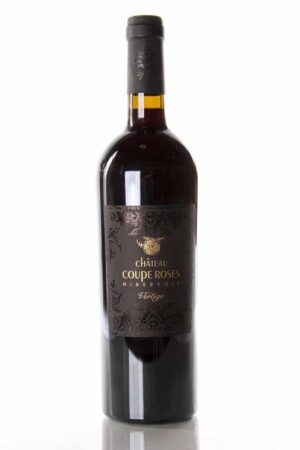
![[:fr]Huile d'olive biologique[:]](https://chateau-coupe-roses.com/wp-content/uploads/2017/12/chateau-coupe-roses-la-caunette-huile-dolive-bio-2-300x450.jpg)



